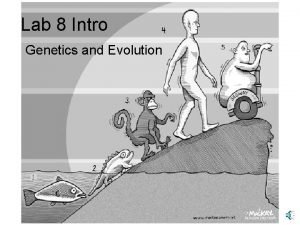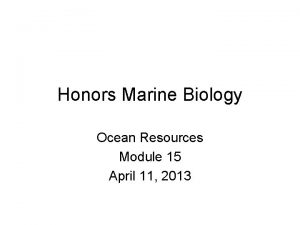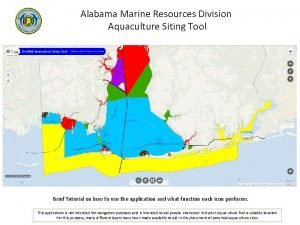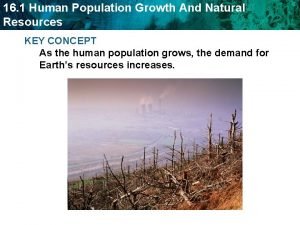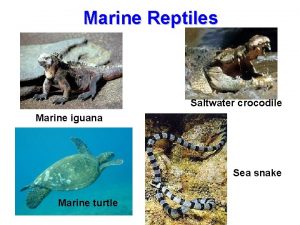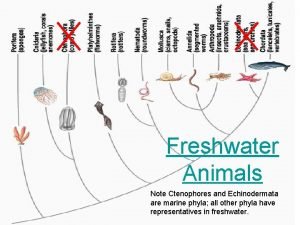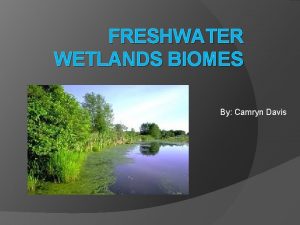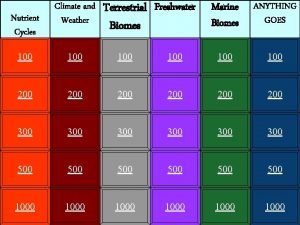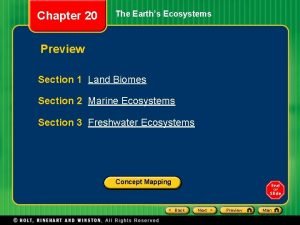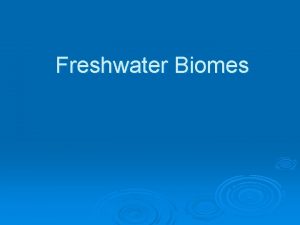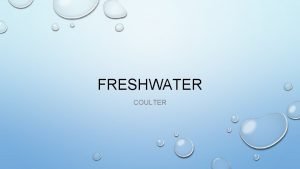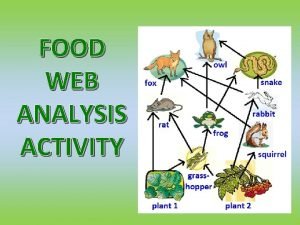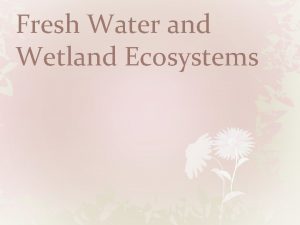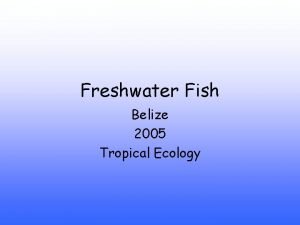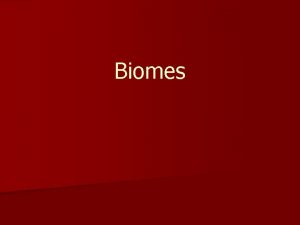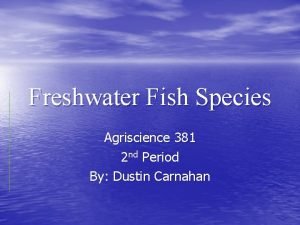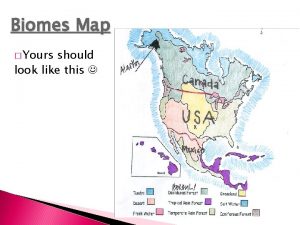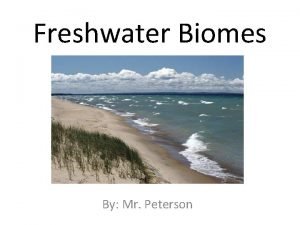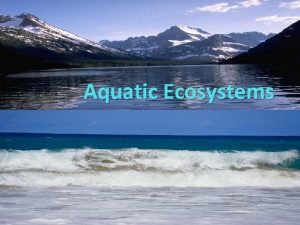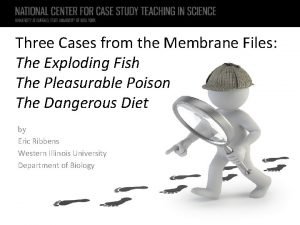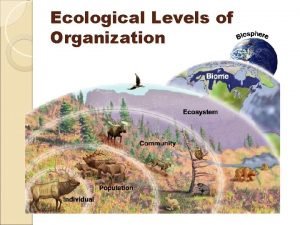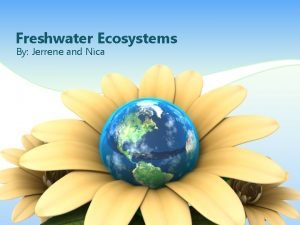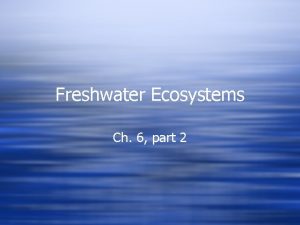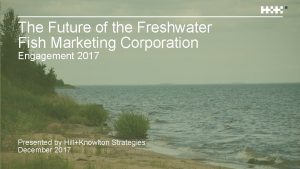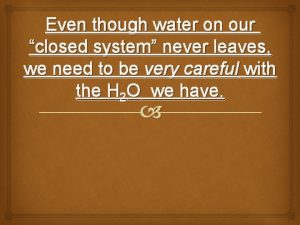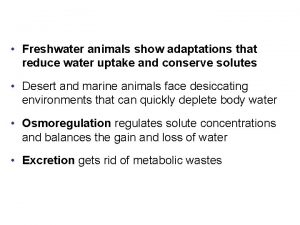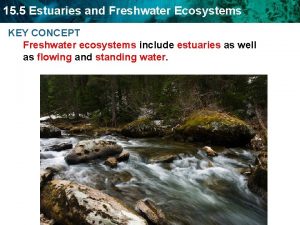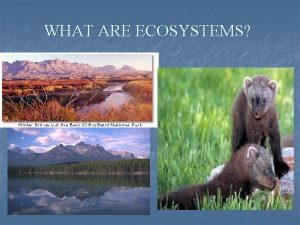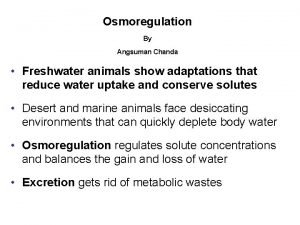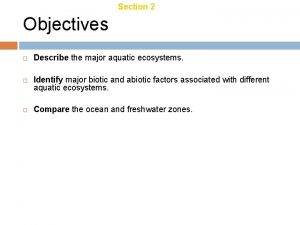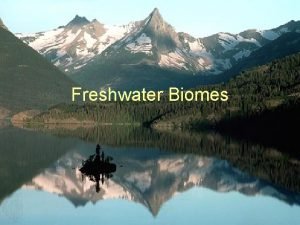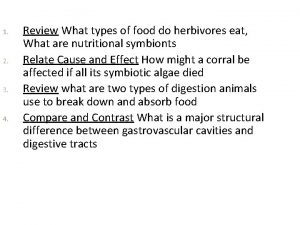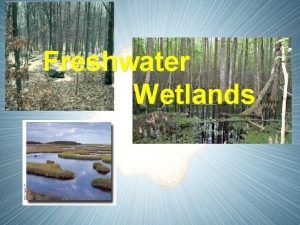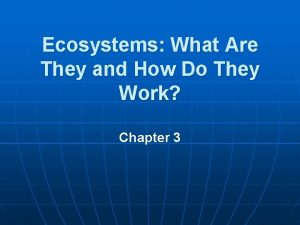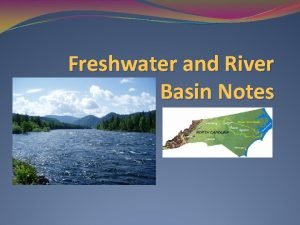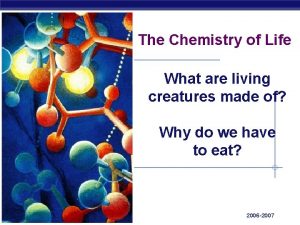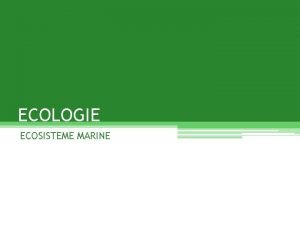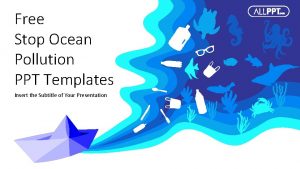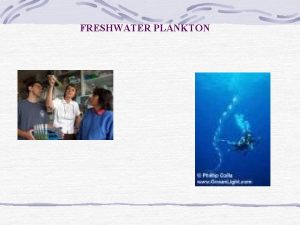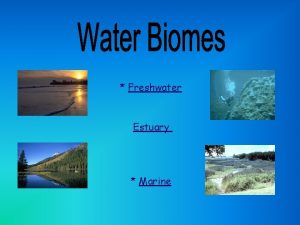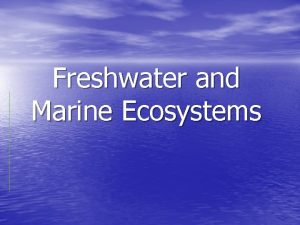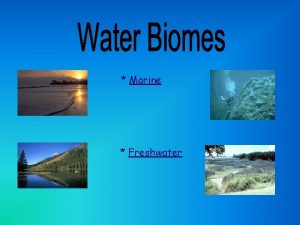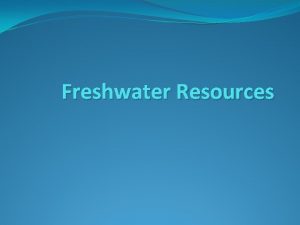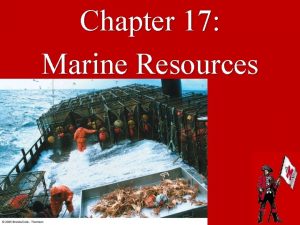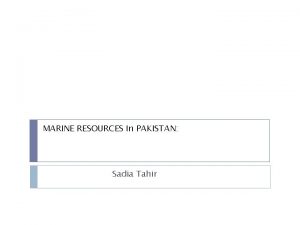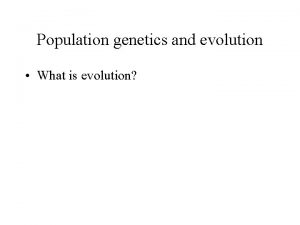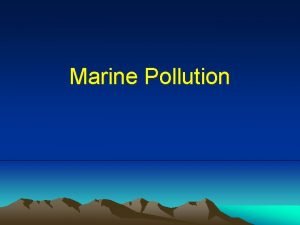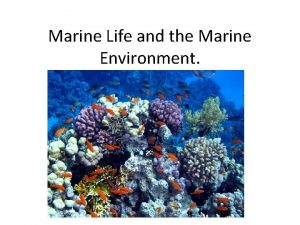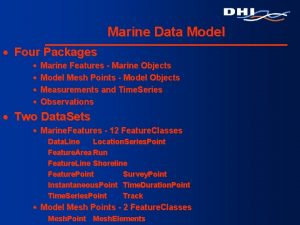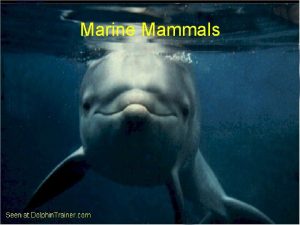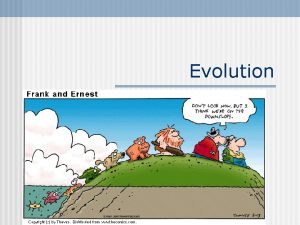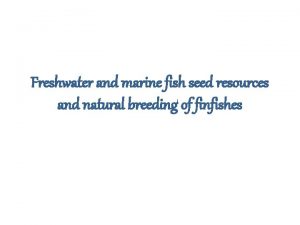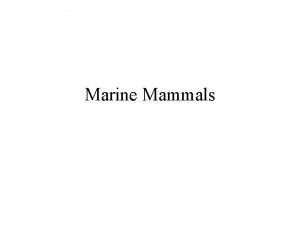Freshwater Resources Evolution Marine Freshwater Population Resources II





















































- Slides: 53

Freshwater Resources Evolution & Marine & Freshwater Population Resources II Coastal Systems Ecology Human Population 100 100 100 200 200 200 300 300 300 400 400 400 500 500 500

$100 a. a smaller river that flows into a larger one b. the area of land drained by a river and its tributaries .

a. Tributary b. Watershed

$200 riverside areas that are productive and species-rich

Riparian zone The riparian zone is critical to the health of every stream and its surroundings environment. It connects the upland zone to the aquatic zone, controlling the flow of water, sediment, nutrients, and organisms between the two. Without a proper functioning riparian zone, the other zones suffer.

$300 a. systems that combine elements of freshwater and dry land b. shallow water allows plants to grow above the water’s surface c. shallow water that occurs in forested areas Can be created by beavers d. ponds covered in thick floating mats of vegetation A stage in aquatic succession

a. Wetlands b. Freshwater marshes c. Swamps d. Bogs

$400 At least two values of wetlands

They slow runoff Reduce flooding Recharge aquifers Filter pollutants

$500 a. region ringing the edge of a water body b. extends along the entire bottom of the water body (Home to many invertebrates) c. open portions of the lake or pond where the sunlight penetrates the shallow waters d. water that sunlight does not reach (Supports fewer animals because there is less oxygen )

a. Littoral zone b. Benthic zone c. Limnetic zone d. Profundal zone

$100 Largest dam in the world

Three Gorges Dam on Yangtze River, China

$200 a. 3 benefits of dams b. 3 drawbacks of dams

Benefits: Power generation Emission reduction Crop irrigation Drinking water Flood control Shipping New recreational opportunities Drawbacks: Habitat alteration Fisheries declines Population displacement Sediment capture Disruption of flooding Risk of failure Lost recreational opportunities Know these!

$300 One method to address global water scarcity issues (besides conservation)

Desalinization = the removal of salt from seawater or other water of marginal quality Distilling = hastens evaporation and condenses the vapor Reverse osmosis = forces water through membranes to filter out salts

$400 a. Example of point source water pollution b. Example of non-point source water pollution

a. Factory, sewer pipes (direct discharge into water) b. Urban and agricultural runoff

$500 Description of stages of water treatment in industrial plants

Primary treatment = the physical removal of contaminants in settling tanks (clarifiers) Secondary treatment = water is stirred and aerated so aerobic bacteria degrade organic pollutants Water treated with chlorine is piped into rivers or the ocean Some reclaimed water is used for irrigation, lawns, or industry

$100 the vertical flow of cold, deep water towards the surface High primary productivity and lucrative fisheries Also occurs where strong winds blow away from, or parallel to, coastlines

Upwelling

$200 a. well-lighted top layer that supports high primary productivity b. habitats and ecosystems occurring between the ocean’s surface and floor c. habitats and ecosystems occurring on the ocean floor

a. Photic zone b. Pelagic c. Benthic

$300 a. Large, dense, brown algae growing from the floor of continental shelves b. Two benefits of “a” answer

a. Kelp b. Shelter and food for organisms, absorbs wave energy, protects shorelines from erosion, eaten by people, serve as thickeners in cosmetics, paints, paper, and soaps

$400 Occurs when zooxanthellae (symbiotic algae) leave coral depriving it of nutrients -Coral lose their color and die, leaving white patches -From climate change, pollution, or unknown natural causes -Nutrient pollution causes algal growth, which covers coral -Divers damage reefs by using cyanide to capture fish -Acidification of oceans deprives corals of necessary carbonate ions for their structural parts

Coral bleaching

$500 Specifically, name given for a harmful algal bloom when nutrients increase populations of a specific algae that produces powerful toxins; this algal species produces reddish pigments that discolor water illness and death to wildlife and humans, economic loss to fishing industries and beach tourism

Red tide

$100 Traits that enhance survival and reproduction are passed on more frequently to future generations than those that do not

Natural Selection

$200 a. Natural selection that drives a feature in one direction b. Selection that produces intermediate traits, preserving the status quo c. Selection that produces traits that diverge in two or more directions

a. Directional selection b. Stabilizing selection c. Disruptive selection

$300 a. species formation due to physical separation of populations -Can be separated by glaciers, rivers, mountains -The main mode of species creation b. species form from populations that become reproductively isolated within the same area -Feed in different areas, mate in different seasons -Hybridization between two species -Mutations

a. Allopatric (geographic) speciation b. Sympatric (reproductive) speciation

$400 a. Top two reasons for our current biodiversity crisis (causes of extinction) b. Term used to describe a species that only exists in a certain, specialized area

a. Habitat fragmentation, invasive species b. Endemic species

$500 a. Curves that demonstrate the likelihood of death varies with age b. Names and description of three types of answer “a”

a. Survivorship curves b. Type I: More deaths at older ages Type II: Equal number of deaths at all ages Type III: More deaths at young ages

$100 Formula used to determine population growth rate

Growth rate = (Crude birth rate + immigration rate) - (Crude death rate + emigration rate)

$200 Names and shapes of two most common population curves.

J-shape (exponential) S-shape (logistical)

$300 a. limiting factors whose influence is affected by population density (ie: increased risk of predation and competition for mates occurs with increased density) b. limiting factors whose influence is not affected by population density ( ie: floods, fires, and landslides) c. animals with long gestation periods and few offspring, have a low biotic potential, stabilize at or near carrying capacity, good competitors d. animals which reproduce quickly, have a high biotic potential, little parental care

a. Density-dependent factors b. Density-independent factors c. K-selected species d. r-selected species

$400 a. the average number of children born per female b. a model of economic and cultural change to explain the declining death and birth rates in industrializing nations

a. Total fertility rate (TFR) b. Demographic transition *Stable preindustrial state of high birth and death rates change to a stable post-industrial state of low birth and death rates.

$500 Four stages of demographic transition


a) Name a minimum of three factors that play a role in a nation’s total fertility and population birth rate. b) Define carrying capacity.

a. • Availability of birth control • The demand for children in the labor force • Base Level of education for women • The existence of public/private retirement systems • Population’s religious beliefs and cultural traditions b. Maximum number of individuals that a habitat can sustain for a long period of time.
 Lab 8 population genetics and evolution
Lab 8 population genetics and evolution 2.15 quiz: marine resources
2.15 quiz: marine resources Alabama marine resources
Alabama marine resources Chapter 4 population ecology section 1 population dynamics
Chapter 4 population ecology section 1 population dynamics Section 1 population dynamics answer key
Section 1 population dynamics answer key Population ecology section 1 population dynamics
Population ecology section 1 population dynamics Population ecology section 1 population dynamics
Population ecology section 1 population dynamics Parasitism
Parasitism Natural resources and population growth
Natural resources and population growth Differentiate fixed resources and variable resources
Differentiate fixed resources and variable resources Renewable vs nonrenewable resources worksheet
Renewable vs nonrenewable resources worksheet Operation transformation process
Operation transformation process Freshwater lizards
Freshwater lizards Freshwater echinoderms
Freshwater echinoderms Climate of freshwater wetlands
Climate of freshwater wetlands Freshwater biomes climate
Freshwater biomes climate Freshwater ecosystem abiotic factors
Freshwater ecosystem abiotic factors 2 ducks
2 ducks The land area that supplies water to a river system
The land area that supplies water to a river system 14.2 uses of freshwater
14.2 uses of freshwater Terrestrial food web
Terrestrial food web Description of freshwater
Description of freshwater Freshwater fish of belize
Freshwater fish of belize Narrow band where the ocean meets land
Narrow band where the ocean meets land Texas freshwater fish identification
Texas freshwater fish identification Texas freshwater fish species
Texas freshwater fish species Upstate freshwater institute
Upstate freshwater institute Map of freshwater biome
Map of freshwater biome Freshwater biomes facts
Freshwater biomes facts Describe freshwater
Describe freshwater Saltwater fish in freshwater explode
Saltwater fish in freshwater explode Ecology foldable
Ecology foldable Abiotic factors in freshwater
Abiotic factors in freshwater Freshwater ecosystems are classified as
Freshwater ecosystems are classified as Human impact on freshwater ecosystems
Human impact on freshwater ecosystems Dock water allowance formula
Dock water allowance formula Hill + knowlton
Hill + knowlton Pie chart of freshwater and saltwater
Pie chart of freshwater and saltwater Freshwater animals & adaptations
Freshwater animals & adaptations Zone of pond ecosystem
Zone of pond ecosystem Non living things in temperate forest
Non living things in temperate forest Freshwater animal adaptations
Freshwater animal adaptations Freshwater zones diagram
Freshwater zones diagram Where are lake biomes located
Where are lake biomes located Many freshwater invertebrates eliminate ammonia by
Many freshwater invertebrates eliminate ammonia by Nbsc freshwater
Nbsc freshwater Wetland ecosystem definition
Wetland ecosystem definition Tertiary consumers in freshwater
Tertiary consumers in freshwater Freshwater basin
Freshwater basin Boans marine
Boans marine Oceanul planetar este reprezentat de
Oceanul planetar este reprezentat de Marine chemistry analysis labs
Marine chemistry analysis labs Marine creature
Marine creature Marine pollution ppt template
Marine pollution ppt template
